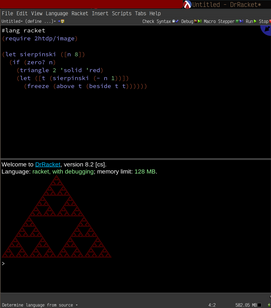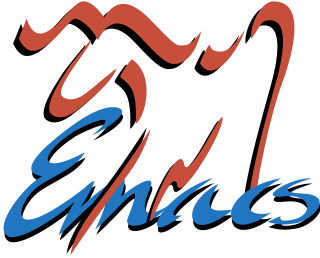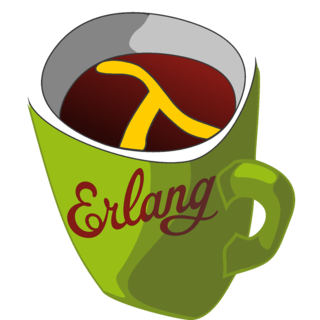Related Research Articles
Common Lisp (CL) is a dialect of the Lisp programming language, published in ANSI standard document ANSI INCITS 226-1994 (S20018). The Common Lisp HyperSpec, a hyperlinked HTML version, has been derived from the ANSI Common Lisp standard.

Lisp is a family of programming languages with a long history and a distinctive, fully parenthesized prefix notation. Originally specified in 1958, Lisp is the second-oldest high-level programming language. Only Fortran is older, by one year. Lisp has changed since its early days, and many dialects have existed over its history. Today, the best-known general-purpose Lisp dialects are Racket, Common Lisp, Scheme, and Clojure.

A macro in computer science is a rule or pattern that specifies how a certain input should be mapped to a replacement output. Applying a macro to an input is macro expansion. The input and output may be a sequence of lexical tokens or characters, or a syntax tree. Character macros are supported in software applications to make it easy to invoke common command sequences. Token and tree macros are supported in some programming languages to enable code reuse or to extend the language, sometimes for domain-specific languages.
Scheme is a minimalist dialect of the Lisp family of programming languages. Scheme consists of a small standard core with several tools for language extension.

A text editor is a type of computer program that edits plain text. Such programs are sometimes known as "notepad" software, following the naming of Microsoft Notepad. Text editors are provided with operating systems and software development packages, and can be used to change files such as configuration files, documentation files and programming language source code.
The ampersand, also known as the and sign, is the logogram &, representing the conjunction "and". It originated as a ligature of the letters et—Latin for "and".
In computer programming, the scope of a name binding—an association of a name to an entity, such as a variable—is the part of a program where the name binding is valid, that is where the name can be used to refer to the entity. In other parts of the program the name may refer to a different entity, or to nothing at all. The scope of a name binding is also known as the visibility of an entity, particularly in older or more technical literature—this is from the perspective of the referenced entity, not the referencing name.
In computer science, a preprocessor is a program that processes its input data to produce output that is used as input to another program. The output is said to be a preprocessed form of the input data, which is often used by some subsequent programs like compilers. The amount and kind of processing done depends on the nature of the preprocessor; some preprocessors are only capable of performing relatively simple textual substitutions and macro expansions, while others have the power of full-fledged programming languages.
In computer science, a dynamic programming language is a class of high-level programming languages, which at runtime execute many common programming behaviours that static programming languages perform during compilation. These behaviors could include an extension of the program, by adding new code, by extending objects and definitions, or by modifying the type system. Although similar behaviors can be emulated in nearly any language, with varying degrees of difficulty, complexity and performance costs, dynamic languages provide direct tools to make use of them. Many of these features were first implemented as native features in the Lisp programming language.
In computing, a polyglot is a computer program or script written in a valid form of multiple programming languages, which performs the same operations or output independent of the programming language used to compile or interpret it.
Hygienic macros are macros whose expansion is guaranteed not to cause the accidental capture of identifiers. They are a feature of programming languages such as Scheme, Dylan, Rust, Nim, and Julia. The general problem of accidental capture was well known within the Lisp community prior to the introduction of hygienic macros. Macro writers would use language features that would generate unique identifiers or use obfuscated identifiers in order to avoid the problem. Hygienic macros are a programmatic solution to the capture problem that is integrated into the macro expander itself. The term "hygiene" was coined in Kohlbecker et al.'s 1986 paper that introduced hygienic macro expansion, inspired by the terminology used in mathematics.
Metaprogramming is a programming technique in which computer programs have the ability to treat other programs as their data. It means that a program can be designed to read, generate, analyze or transform other programs, and even modify itself while running. In some cases, this allows programmers to minimize the number of lines of code to express a solution, in turn reducing development time. It also allows programs greater flexibility to efficiently handle new situations without recompilation.
Embeddable Common Lisp (ECL) is a small implementation of the ANSI Common Lisp programming language that can be used stand-alone or embedded in extant applications written in C. It creates OS-native executables and libraries from Common Lisp code, and runs on most platforms that support a C compiler. The ECL runtime is a dynamically loadable library for use by applications. It is distributed as free and open-source software under a GNU Lesser Public License (LGPL) 2.1+.

Racket is a general-purpose, multi-paradigm programming language based on the Scheme dialect of Lisp. It is designed as a platform for programming language design and implementation. In addition to the core Racket language, Racket is also used to refer to the family of programming languages and set of tools supporting development on and with Racket. Racket is also used for scripting, computer science education, and research.
Common Lisp the Language is a reference book by Guy L. Steele about a set of technical standards and programming languages named Common Lisp.

GNU Emacs is a free software text editor. It was created by GNU Project founder Richard Stallman. In common with other varieties of Emacs, GNU Emacs is extensible using a Turing complete programming language. GNU Emacs has been called "the most powerful text editor available today". With proper support from the underlying system, GNU Emacs is able to display files in multiple character sets, and has been able to simultaneously display most human languages since at least 1999. Throughout its history, GNU Emacs has been a central component of the GNU project, and a flagship of the free software movement. GNU Emacs is sometimes abbreviated as GNUMACS, especially to differentiate it from other EMACS variants. The tag line for GNU Emacs is "the extensible self-documenting text editor".

Emacs or EMACS is a family of text editors that are characterized by their extensibility. The manual for the most widely used variant, GNU Emacs, describes it as "the extensible, customizable, self-documenting, real-time display editor". Development of the first Emacs began in the mid-1970s, and work on its direct descendant, GNU Emacs, continues actively as of 2021.
A scripting language or script language is a programming language for a runtime system that automates the execution of tasks that would otherwise be performed individually by a human operator. Scripting languages are usually interpreted at runtime rather than compiled.
CL-HTTP is a web server, client and proxy written in Common Lisp. It is based on its own web application framework. It was written by John C. Mallery "in about 10 days" starting in 1994 on a Symbolics Lisp Machine. In the same year a port to Macintosh Common Lisp was done. In 1996 CL-HTTP became the first web server to support the HTTP 1.1 protocol. It runs on Unix, Linux, BSD variants, Mac OS X, Solaris, Symbolics Genera and Microsoft Windows.

Lisp Flavored Erlang (LFE) is a functional, concurrent, garbage collected, general-purpose programming language and Lisp dialect built on Core Erlang and the Erlang virtual machine (BEAM). LFE builds on Erlang to provide a Lisp syntax for writing distributed, fault-tolerant, soft real-time, non-stop applications. LFE also extends Erlang to support metaprogramming with Lisp macros and an improved developer experience with a feature-rich read–eval–print loop (REPL). LFE is actively supported on all recent releases of Erlang; the oldest version of Erlang supported is R14.